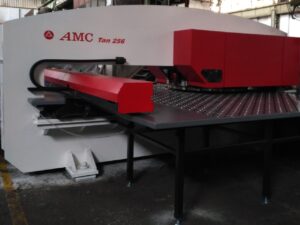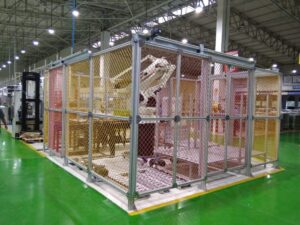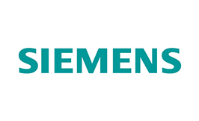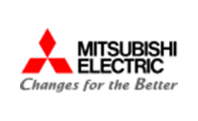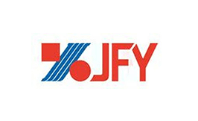Industrial 6-axis robots are being employed in production more than ever before. They can transfer materials, weld, paint, palletize, and assemble. It’s also not uncommon to see robots outfitted with a variety of cutting heads. Pipes and vessels may be sliced around by an oxyfuel or plasma cutting robot. The edges of a produced sheet metal item can be trimmed by a laser cutting robot.
A robot that can cut with a waterjet is not as common. Nevertheless, thanks to innovations in robotic system design, combining a robot with a waterjet is no longer as difficult as it previously was. A fabricator can enjoy the benefits of the correct application.
All grades of steel, aluminium, titanium, glass, and granite may be cut using the abrasive waterjet method. The method yields a very clean cut with no considerable heat-affected zone (HAZ).
A high-powered pump, such as an intensifier pump, is used in waterjet systems to “intensify” the water stream to 60,000 PSI or greater. Many items can be sliced with simple water (no abrasives) at this pressure. Many things that would ordinarily be cut with scissors or a knife may be sliced with ordinary water, according to a decent rule of thumb.
Waterjet cutting provides producers with versatility that no other cutting method can match. When Does a Robotic Waterjet Sound Right?
Let’s have a glance at some of the attractions of waterjet cutting.
There Are No Chemicals Or Heat.
Waterjet cutting is a cold cutting technology that employs just water and granite to erode the material. Any heat created by the erosion process is instantaneously cooled by the water stream. As a result, warping, distortion, and material hardening, which are commonly associated with laser, plasma, and machining, are removed, reducing the need for additional processing.
It is also safer for employees and the atmosphere since it emits no vapor or smoke, and any dust particles generated during the erosion process are contained in the water and properly filtered out afterward.
Internal Cutouts that are Accurate
Versatility
If your product cannot be cut with a waterjet, it most likely cannot be cut at all! Waterjet cutting is utilized in practically every sector because of its power to cut almost any substance very economically while not affecting the material’s qualities. Waterjet can slice materials varying from 0.010″ acrylic to 10″ thick stainless steel. Thin materials can even be layered to boost production and save costs.
These machines come in a variety of table sizes ranging from 0.5m x 1.5m to 2m x 4m, but some are custom built and may encompass large table sizes of 4m × 18m and operate numerous heads.
There are no tool changes required.
Cutting with precision
Reasonably priced
Waterjet excels in cutting extremely thick materials such as aluminum, multi-layer materials, composites, hardened metals over 25mm thick, and items that must be cut with no deformation or heat impacted zones.
If you want a process that can create exceptional edge quality while requiring little or no extra edge treatment and the ability to cut nearly any type and thickness of the material, waterjet is your best option.
Waste is reduced.
Waterjets generate very little to no toxic waste. This invariably contributes to lower trash disposal costs. Highly competent operators can cut out significant chunks of usable scrap metal that would have been lost if standard cutting methods had been used.
Switching to the sole use of the waterjet cutter, if applicable, would go a long way toward minimizing hazardous waste in ecologically aware industrial operations. It is great to see these new technologies emerge, bringing answers to these long-standing environmental concerns.
Aside from that, water jet cutting allows pieces to be closely nested to maximize material consumption and save material by decreasing kerf.
Increases Speed
Due to the obvious pace at which a 5-axis waterjet cutter can work, the turnaround time for the creation of new components is substantially faster than the industry average. As a consequence, by utilizing this creative strategy, manufacturing organizations can considerably boost their output and, as a result, their revenues.
AMC has successfully designed, developed, and supplied Robotic Waterjet systems for cutting 3 D parts. AMC has designed the World’s most Economical Robotic Waterjet System.
There’s no excuse to put off adding this unique and beneficial technology into your manufacturing firm’s company lineup after learning about the wide range of benefits of waterjet cutting.
When you’re willing to take advantage of this multitude of waterjet cutting advantages for your firm, please do not hesitate to contact our team, who are always delighted to assist. You can visit us at https://amcautomation.in/


